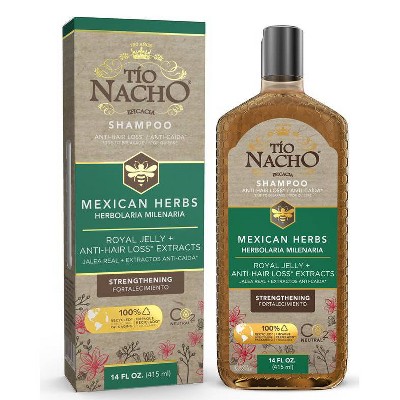Tiger Balm is a topical over-the-counter pain reliever. It is often used to relieve back pain, joint pain, stiffness, sprains, and arthritis pain. It is applied to the area that is in pain and absorbed through your skin. You can buy it as a cream, gel, or liquid.
Most forms of Tiger Balm contain camphor and menthol. Tiger Balm products may also contain other ingredients like cajuput oil, clove oil, and others. Camphor works by increasing blood flow to the surface of the skin and creating a warming sensation. Camphor and menthol may also help improve circulation and reduce inflammation.
This article discusses the over-the-counter topical pain reliever Tiger Balm, how it works, and how to use it. It also looks at the ingredients and potential side effects of this medication.
Wirestock / Getty Images
Tiger Balm Uses
Tiger balm is used to relieve both deep and superficial pain. It is also sometimes also used to treat other conditions. Some of its most common uses include:
- Muscle pain: Tiger Balm is traditionally used to treat muscle aches and pain from overuse and minor injury.
- Joint pain: Tiger Balm is often used to treat joint pain from osteoarthritis, rheumatoid arthritis, and other conditions that affect the joints.
- Back, neck, and shoulder pain: Studies have found that topical menthol is superior to a placebo for treating pain and improving range of motion in the back and neck.
- Headaches: Research has found Tiger Balm to be as effective as Tylenol (acetaminophen) for headaches.
- Pain from shingles: Shingles can cause long-lasting pain, including neuropathic pain. Camphor and menthol may help relieve this type of pain. However, Tiger Balm should not be applied to shingles blisters since these can break open and crust over.
- Stomach pain: Anecdotally, camphor and menthol are sometimes applied to the abdomen to help treat stomach pain, but this is not yet supported by research.
- Colds and cough: Applying this medication to your chest may help cough and cold symptoms. Do not apply directly under the nose or use for cold symptoms in children under the age of 2.
- Discomfort from insect bites: Some people use Tiger Balm to relieve the itching or sting of insect bites. It is also sometimes used as a mosquito repellant.
- Toenail fungus: There are anecdotal reports that Tiger Balm might help treat toenail fungus, but there isn't any research to support this use.
- Neuropathic pain: Some studies suggest that camphor and menthol may help relieve neuropathic pain.
- Poor circulation: Because the active ingredients in Tiger Balm help increase blood flow, this medication may help treat circulation problems, though more research is needed before it can be recommended for this purpose.
- Stretchmarks: Tiger Balm's ability to increase blood flow is thought by some to help improve the appearance of stretch marks, but this is not supported by research.
Can I use Tiger Balm for a toothache?
No. Tiger Balm should only be used as a topical treatment. However, clove oil, one of the ingredients in Tiger Balm, is used as a pain reliever for toothaches.
How Tiger Balm Works
The active components of Tiger Balm come from plants. They are blended with paraffin oil.
Menthol, eucalyptus, and oil of wintergreen are believed to relieve pain with a cooling sensation that distracts you from the pain. Such products are called counterirritants and offer temporary pain relief.
These are the active ingredients used in various combinations in Tiger Balm products:
- Camphor comes from the Cinnamomum camphora plant. It induces warm and cold sensations in the skin and increases blood flow.
- Menthol is made from mint oils. It may cause blood vessels to constrict, which has been shown to reduce pain.
- Methyl salicylate is an anti-inflammatory and analgesic derived from the leaves of the wintergreen plant.
- Capsicum extract is an analgesic derived from chili peppers.
These ingredients are considered inactive, but they may still have some benefits for relieving pain:
- Cajuput oil comes from cajuput trees. It is used to relieve toothaches and headaches in some cultures.
- Cassia oil comes from the bark of the Cinnamomum cassia plant. It may have an anti-inflammatory effect.
- Dementholized mint oil comes from a peppermint plant. It's been used as a topical treatment for pain.
- Clove oil comes from a clove plant. It's been used to ease toothaches.
Tiger Balm has a long history. Manufactured and distributed by Haw Par Healthcare in Singapore, its "secret" herbal formula is said to date back as far as the Chinese emperors. Today, over 20 million jars of Tiger Balm are sold each year in over 70 countries.
How to Use Tiger Balm
Tiger Balm is only used topically, on the skin. Wash your hands with soap and water before use. You should apply Tiger Balm to the part of your body where you are experiencing pain. Massage the product into your skin until it is fully absorbed. Wash your hands after use.
Tiger Balm is used PRN (meaning as needed), so you can reapply when your pain comes back. You can reapply up to four times a day. It should relieve your pain within 10 to 20 minutes.
You can use Tiger Balm even if you use oral over-the-counter or prescription pain relievers. However, check with your healthcare provider if you plan to use it along with another topical pain reliever because the combination may irritate your skin.
Precautions and Side Effects
Tiger Balm is for external use only. It should not be taken by mouth. Don't get Tiger Balm in your eyes or on mucous membranes or other sensitive areas, such as your ear canals, vagina, or rectum. You should not use Tiger Balm on cuts, scrapes, or open wounds.
Test the product on a small area of skin to make sure it doesn't cause irritation before you apply it widely. Skin irritation can cause pain, redness, or, rarely, bleeding of the affected area. If you experience redness or irritation while using Tiger Balm, discontinue use.
Tiger Balm may also cause an allergic reaction with a skin rash, swelling of the skin or throat, or breathing difficulties.
Avoid bathing just before or after using the medication, and don't wrap the treated area tightly after application. You should also avoid activities that increase your body temperature, such as vigorous exercise.
Avoid using this product if you are allergic to aspirin, salicylates, or nonsteroidal anti-inflammatory drugs (NSAIDs).
Tiger Balm Products
Tiger Balm is available in different formulations. Each formulation contains the same or slightly different ingredients in varying amounts and can be used for different purposes, depending on the location and type of pain.
Tiger Balm formulations include:
- Tiger Balm Extra-Strength Pain-Relieving Ointment: This is the standard Tiger Balm ointment formula with a strong menthol scent. It can be found in most drugstores. It contains 11% camphor and 10% menthol.
- Tiger Balm Ultra-Strength Ointment: This ointment contains more pain-relieving menthol (11%) than Extra-Strength Tiger Balm. It does not stain.
- Tiger Balm Ultra Strength Sports Rub: This form contains the same amount of menthol (11%) and camphor (11%) as the ultra-strength formula, but it comes in a larger tin.
- Tiger Balm Arthritis Rub: Designed specifically for arthritis pain, this rub is a cream rather than an ointment. It comes in an "arthritis-friendly pump." It's alcohol-free, so it is less likely to cause skin irritation. The active ingredients are 11% camphor and 11% menthol.
- Tiger Balm Neck & Shoulder Rub: This option is designed for fast relief of neck and shoulder pain. It has a "vanishing" scent. The active ingredients are 11% camphor and 10% menthol.
- Tiger Balm Pain Relieving Patch: Similar to other pain-relieving gel patches, this product is designed for larger muscle and joint pain relief. It works well on shoulder and lower back pain. The odor is minimal. The smaller patches contain 24 milligrams (mg) menthol, 80 mg camphor, and 16 mg capsicum extract; larger patches contain 30 mg DL-camphor, 70 mg L-menthol, and 46 mg capsicum extract.
- Tiger Balm Liniment: This is a liquid version of Tiger Balm that can be applied to larger areas to relieve pain. The active ingredients in this form are 28% methyl salicylate and 16% menthol.
- Tiger Balm Active Muscle Rub: Made for muscle strains, this non-greasy cream is designed to ease pain from exercise and other physical activity. The active ingredients are 15% methyl salicylate, 5% camphor, and 3% menthol.
- Tiger Balm Active Muscle Pain Reliever Spray: This spray version is intended for use on hard-to-reach parts of the body. Its active ingredients are 25% methyl salicylate, 16% menthol, and 7% camphor.
- Tiger Balm Active Muscle Pain Relief Gel: This gel form is marketed for post-workout pain and contains 16% methyl salicylate and 8% menthol.
Why is Tiger Balm not FDA approved?
Over-the-counter medications like Tiger Balm are not always reviewed and/or approved by the FDA, but the FDA permits their sale as long as they comply with FDA policies and regulations. According to the manufacturer, Tiger Balm products do comply with FDA regulations, however, this does not mean that the FDA has evaluated them.
Summary
Tiger Balm is a topical pain reliever. There's some evidence that its ingredients may ease pain or reduce inflammation. It's possible that the product's cooling effect distracts users from the pain of muscle aches, tension headaches, or joint pain.
To use Tiger Balm, rub it into the skin in the area where you feel stiffness or pain. Be careful not to get it in your eyes, mouth, or other sensitive areas, and don't use it on open sores or wounds.
A Word From Verywell
Sometimes pain is caused by a serious or urgent medical condition. For less severe pain such as joint pain or muscle aches, you can consider using Tiger Balm. You are the best judge of whether it is working for you, and you can decide how often you will use it.
Be sure to tell your healthcare provider if you are using Tiger Balm or any other non-prescription oral or topical medications. They can interact with prescription medications and cause side effects.





:max_bytes(150000):strip_icc()/identifying-and-controlling-septoria-leaf-spot-of-tomato-1402974-02-b556ef33db30454dbc021c3e7cea89b5.jpg)




